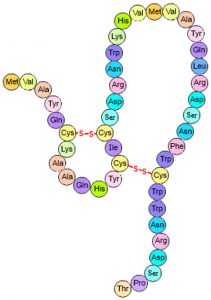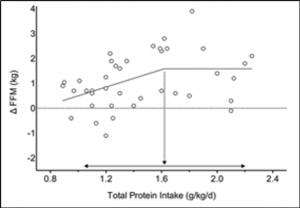By Alec Chaves
Whether you’re the star of the football team, a long distance runner, or just like to work up a sweat, we all have a common goal: to be our best. Many people think that the professional athletes we see on TV, like JJ Watt or Lebron James, get to where they are solely because they spend countless hours in the gym. Few people, however, really appreciate how much the food that these pros eat actually helps when it comes to fitness goals. So let’s take a closer look at one dietary nutrient that is often misunderstood: protein.

Proteins are molecules made of individual building blocks known as amino acids that, when connected, allow the protein to carry out one special job in our bodies. It’s kind of like connecting individual Legos to make an airplane or a house. In our bodies, each protein’s job is so specific that our DNA has 20,000 different genes, or protein “recipes”, to build all of the proteins your body needs to live. In your muscles, some proteins are designed to generate force and power, which helps you do things like biceps curls or sprints. But proteins don’t hang around forever. Every protein has a certain lifespan in our bodies after which they break down and release their amino acids, which can then be used to make another protein. However, if no new amino acids are introduced, then you will not be able to make new proteins to make your muscles bigger. Think about breaking down a Lego airplane to get all the pieces back to make another airplane. If you do not add any more lego pieces to your arsenal, then you’ll only be able to build the same size airplane each time. But what if you want to build a bigger airplane–or build more proteins in your muscle? That requires adding more amino acids to your building block inventory, which we can do by breaking down the protein from protein-rich foods like steak, milk, and beans. The real question is, how much dietary protein does your body need to make new proteins and help us build the muscle we want? The most recent answer to this was released by the American Dietetics Association, Dietitians of Canada, and American College of Sports Medicine. These associations suggest that active adults should eat anywhere from 0.5-0.9 grams of protein for every one pound of body weight per day to help the body make new proteins. So, if you weigh 140lb, you’d need to consume 70-127 grams of protein every day. Although these recommendations have been made for adults, the same amount of protein seems to be enough for teenage/adolescent athletes as well.
The next thing you might be thinking is, “does eating more protein than recommended increase protein building?” You may be surprised to hear that the answer is no. Dr. Brad Schoenfeld and Dr. Stuart Philips, two leading experts in the nutrition field, recently published an article that reviewed almost 50 studies on people who were trying to build muscle by lifting weights. They concluded that consuming more than 0.7 grams of protein/lb of body weight (which is equal to 1.6g/kg of body weight, as shown in the figure from their paper) did not lead to a further increase in muscle mass (FFM, as shown in the graph above). This is important to remember because high protein diets can place added stress on your kidneys, especially over long periods of time. Therefore, it is very important to consume only the amount of protein you need to maximize the benefits while avoiding any potential long term side effects.
Edited by Anna Wheless and Emma Goldberg

